The Entire Collection of MB&F Watches in Retrospective, including Video and Tons of Live Photos
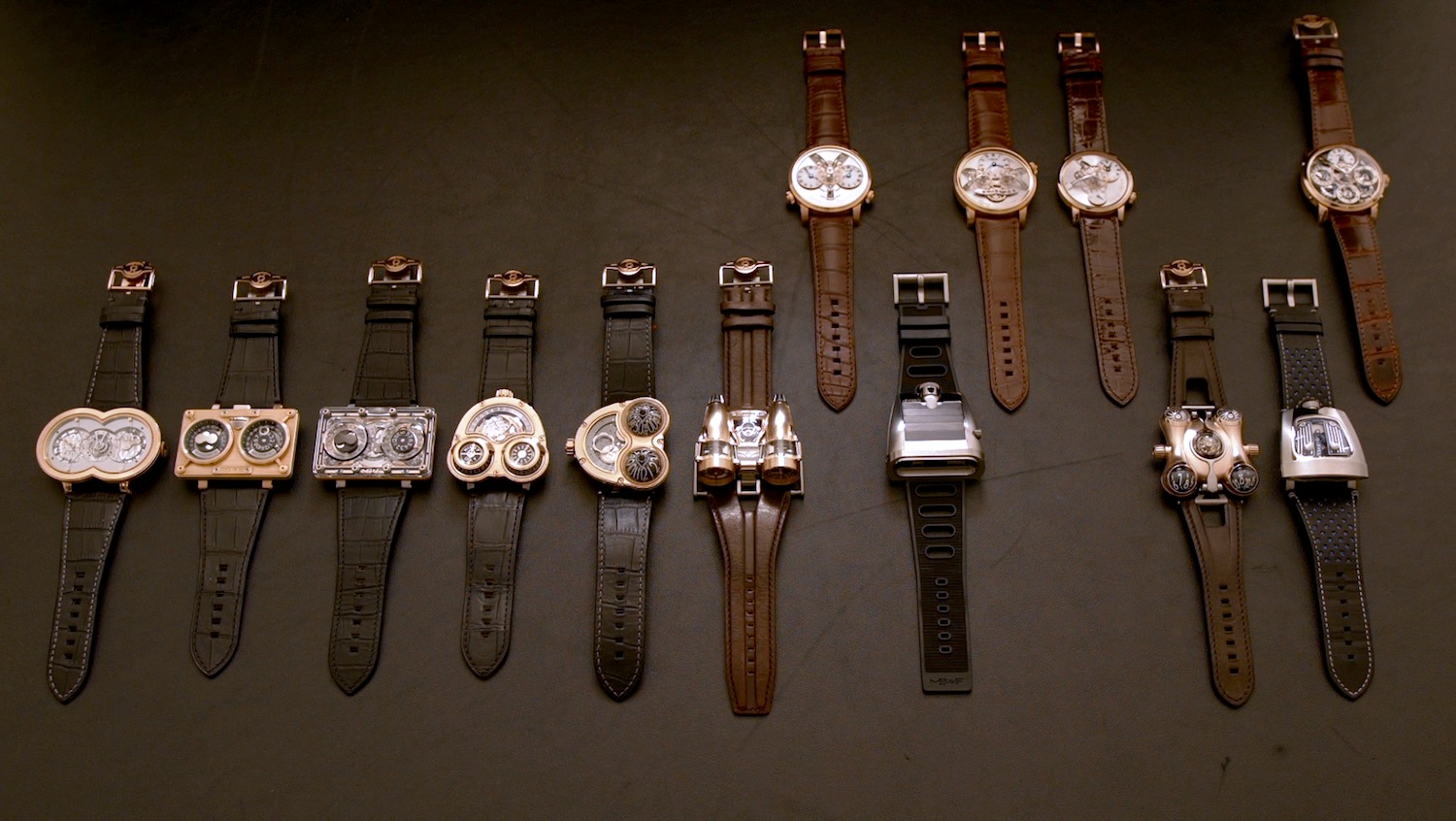
In 2005, a guy named Maximilian Büsser took a great decision, a decision that some qualified of crazy, unconscious or simply doomed to fail. He decided to create a watch brand, with unexpected designs and incredibly complicated movements. Building a watch company from scratch, with in mind an idea of doing everything in the opposite direction of what people expect, was indeed a risk. But MB&F is still there and they celebrated their 10th anniversary last year. What they achieved is remarkable, unique and inspiring. Instead of looking at it from a business angle, we bet that you prefer to have an early retrospective of everything Max Büsser and Friends did. This must not be seen as a Swan Song at all, but as a celebration of all the great things they did, just the time of a short break before the many creations to come.
In 2005, Maximilian Büsser created what is today part of the most famous independent watchmakers around, a brand that even the big and old Maisons know – and that, without copying, keep an eye on. What is now a success story could have been a tragic failure. Creating a watch brand, with designs that are far from the norm, with prices that are much higher than the industry average, with displays that are far from the customers habits and with complications that are outstanding… This sounds like a risky task. But they survived. Even better, they grew, they developed and they gain in only 11 years an unexpected recognition. Apart from the watches themselves, the success of MB&F may also be into the creation process. Like the rest, nothing is classical here. MB&F has never been a one-man-show.
MB&F is based around one very simple and fundamental idea: to assemble talented horological artisans, artists and professionals – all friends of the brand – to design and craft each year (at least) one radical and original horological piece. Behind every single watch from MB&F, you can find names like Eric Giroud, Kari Voutilainen, Sten Sarpaneva, Peter Speak Marin, Alain Silberstein or Chronode, to name a few. This idea however, Max Büsser had it before creating MB&F. Indeed, in 1998, Max was appointed managing director of Harry Winston Rare Timepieces. Working with talented independent watchmakers, he created the the innovative and revolutionary Opus series of timepieces. Add this with a wish of independence and unlimited creativity, and you have the “raison d’être” of MB&F. And everything started with the HM1, in 2005.
The MB&F HM1
The MB&F HM1 is not only important because of its design or because of its complications and display. It is important because being THE watch that defined what MB&F is still now all about. It sets the basics of what the future MB&F watches will later be and bears all the codes of the actual Horological Machines. The characteristics you can see here are still used, for most of them, in all MB&F watches: the deconstruction of the display, the shapes – inspired by retro-futuristic principles, steampunk or science-fiction (three themes so dear to Max and his childhood dreams), the construction of the watch as a entity and not an assembly of parts – the shape movement, its integration into the case, the display, the overall shape of the watch, the unique placement of some technical elements… Everything is unique and the conception of each elements is linked to the rest.
When revealed to the world, this watch was unique, completely unexpected, highly complex and huge. Build around a central tourbillon, with two separated dials – one with retrograde hours, one with retrograde minutes and power reserve. The movement is also noticeable, as showing the exact same 8-shape as the case, and being automatic too – with a rotor turning on one side of the watch. The tourbillon balances the design, each of the two sub-dials giving echo to the other. This machine, with 7 days of power reserve, is also an impressive technical innovation, as being the first watch with four barrels connected in both parallel and series, as well as the first movement to have the energy transmitted to the regulating system from two sources simultaneously. This first machine is extremely bold (even more when you consider what was on the market in 2006), massive and uses modern materials, like sapphire crystal for the bridges over the indications. However, it is also a great tribute to traditions, with a movement build and finished (by Laurent Besse and Peter Speake Marin) in the most classical Haute Horlogerie style.
When looking back at this early watch, what strikes most is how consistent the work of MB&F has been, in terms of philosophy, style, design, inspirations and watchmaking. Everything is in here, without the next ones to copy this superb UFO.
The MB&F HM2
While the HM1 was designed with curves, the MB&F HM2 plays on more brutal lines, with a perfectly rectangular and linear case. The overall result is even more technical, more industrial and more steampunk. The change of design is easy to feel but the inspiration and link with the rest of the family is clearly obvious, mainly because of the display again relying on 2 separated dials. However, while the HM1 was deconstructing the time, the HM2 uses this twin-display to play with complications. While using a more simple base movement – an outsourced, non-tourbillon classical round calibre – the module on top is clearly far from easy.
The right dial is dedicated to the time, with retrograde minutes and instantaneously jumping hours. The left dial serves the additional complications: a jumping retrograde date and a double hemisphere moon-phase indication. And all of that powered by a round automatic movement, placed in the center of the watch… and that means a few connecting gears and levers to function! The MB&F HM2 has been offered in several editions, including on Bauhaus-inspired version made with Alain Silberstein (see it here) and even an edition made with a sapphire case – something that was clearly avant-garde at that time, while now such cases are quite often seen.
This MB&F HM2 is a strong evolution of the first concept, playing on the same codes while being refreshing. It has a certain brutality but also offers some poetry in the display. Same inspirations are used, steampunk is reinforced, especially with these two porthole-like apertures that somehow link it to a Jules Verne ship.
The MB&F HM3
A same duality in the display, still a steampunk and retro-futuristic approach, of course a design that no one else could have made, reactions that have been extreme, going from love to hate. The MB&F HM3 is still a piece of exacerbated creativity. However, with the HM3, Max Büsser added a new theme: science fiction and space exploration, with this watch that could have easily been a neo-retro galactic vessel. A noticeable feature of the MB&F HM3 sits in its 3-dimensional experience. While most watches have to be read from the top, this watch is sculptural and can be read in several angles.
The star of the show here is less the display than the movement, that is simply exposed on the front of the watch. Despite the fewer complications included – a date and a day-night indication – the HM3 is complex, due to its 3D construction. Time relies on two cones – one for the minutes, one for the hours and day-night indicator – that are connected to the movement thorough high-tech ceramic bearings.
The HM3 has certainly been one of the largest play-fields of Max Büsser and Friends, as multiple editions have been created. Next to the two inaugural watches, the Sidewinder (cones perpendicular to arm) and the Starcruiser (cones in line with arm), we’ve also seen the HM3 Frog. Just by changing the shape of the cones into glass domes, this spaceship-like watch became organic and sort of alive, as if it was starring at you constantly. Then came a second edition, part of the Performance Art machines, made together with Stepan Sarpaneva, the MoonMachine – which is still one of Editor-in-Chief’s favorites. Based on the HM3 Frog and its glass domes, the MoonMachine – you’ve guessed it – adds a moon indication, covering the rotor and movement. A jewelry piece, made with Bourcheron and shaped like an owl, is also to be noticed.
In one single case, this watch explored dozens of themes and inspirations, for results that are all extremely bold and surprisingly different. The MB&B HM3 could easily be a theme of collection alone.
The MB&F HM4
Back to simple inspirations, to childhood dreams and to playfulness. The HM4 is one of the simplest to understand in terms of themes and references. No one can miss the airplane / spaceship / turbo-jet connection here. This watch is a steampunk version of a Star Wars jet-fighter, mixed with vintage elements of WWII planes on some editions. However, if the inspiration is less cerebral and more obvious for a large audience, the MB&F HM4 is a perfect continuation, with a respect for the codes of the brand. The 3D construction and perception of time, the movement built according to the shape of the watch and its display and again, the duality of the display.
The complexity of the HM4 is not in its complications. It remains, after all, a relatively simple piece, only displaying the time (on the right dial) and the power reserve (on the left). However, the beauty has to be seen in watchmaking skills, has the movement literally has the same shape as the watch: an horizontal plate, serving as a base for the movement – including the automatic winding, the storage of energy and the regulating organ – is connected to two modules, placed on top of the watch. This means two vertical gear trains, transferring power to the twin pods indicating hours/minutes and power reserve.
Based on the original Star-Wars pod-like editions, MB&F transformed this watch into a military, almost cartoon-like piece, the Razzle Dazzle and the Double Trouble, which can be seen as referenced to WWII american aircrafts, with their riveted fuselage and pin-up paintings on the sides. Combined with vintage distressed leather straps, the look was voluntarily exaggerated and ironic. The final edition, with its black case and squarish cap around the indications, is a sort of tribute to contemporary stealth jet planes.
The MB&F HM4 is certainly the one that is the closest from being a gimmick. Everything is voluntarily exaggerated and pushed to the extreme and we’re close to the frontier of too-much – but only close as the border is never crossed. And that makes the HM4 a pure joy on the wrist, as probably the most racy of them all.
MB&F LM1
With the MB&F LM1, we enter an entirely new era. What some could see as a complete break in the family is more to be seen as a necessary evolution. While being somehow traditional, classical… and round (yes, simply round), the LM1 doesn’t forget all the codes of MB&F but adds another concept: what would have happened if Max had been born in 1867 instead of 1967? In the early 1900s the first wristwatches appear and what if he would want to create three-dimensional machines for the wrist, but there are no Grendizers, Star Wars or fighter jets for his inspiration. But he does have pocket watches, the Eiffel Tower and Jules Verne. The answer is the LM1. It had to be round, it had to be gold and traditional in the execution, but we’re talking MB&F, so it had to be 3-dimensional and bold.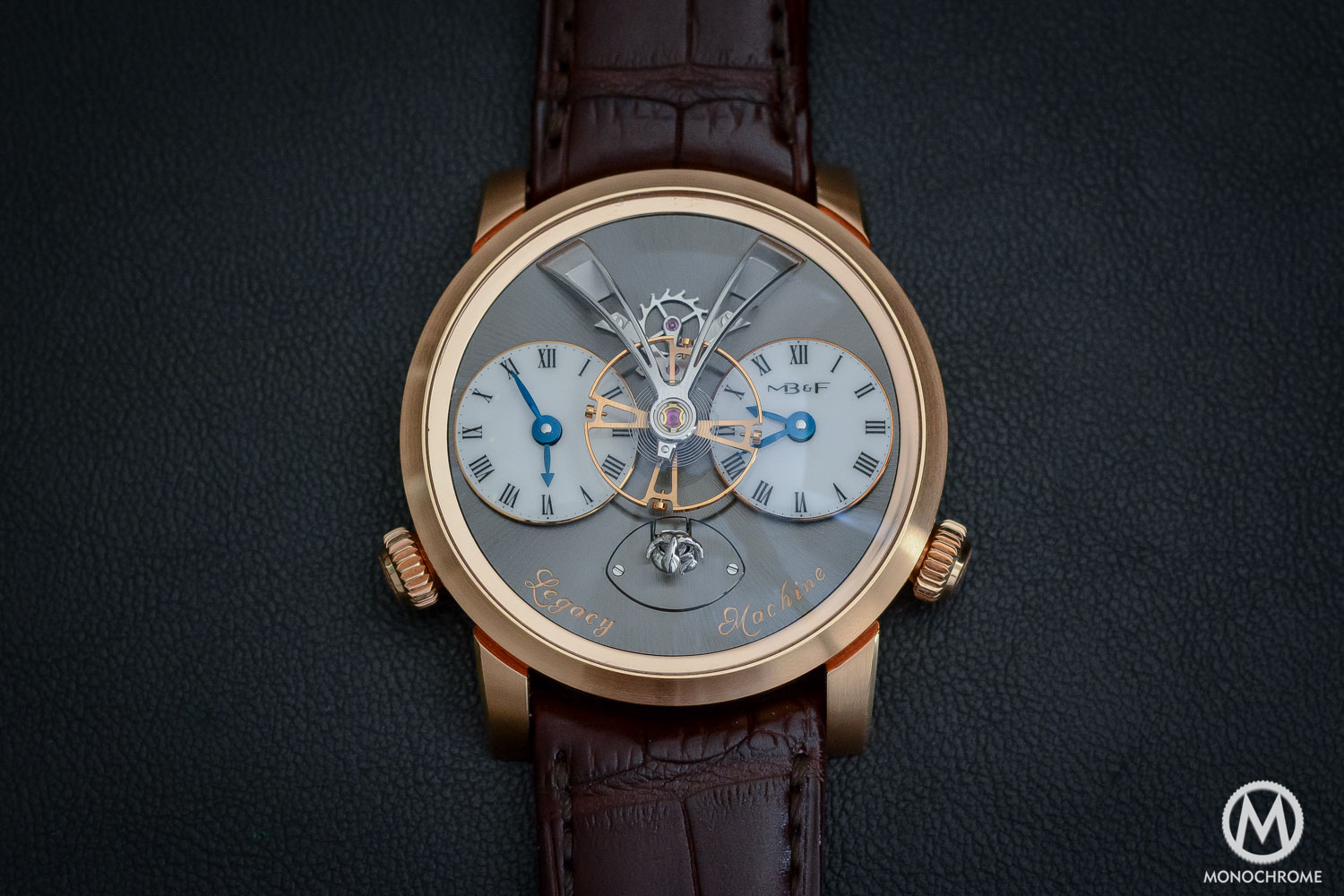
Despite the round case, some of the codes of MB&F are easily seen: the 3D conception with a large floating balance wheel held by a skeletonized arch (thanks Mister Eiffel), the dual display of the time or still a bit of steampunk inspiration. The rest however uses the codes of antique watchmaking, with a classical complication – a two time-zones display, however totally independent – and a power reserve – but a vertically positioned one. The back of the watch reveals a movement done in respect with traditional haute horlogerie, with Geneva stripes, large and shiny polished bevels, gold chatons… again, we’re far from the idea of a machine.
The movement was conceived by Jean-François Mojon (Chronode) and the decoration was supervised by no less than Kari Voutilainen. The result of the LM1 is a watch that dramatically changes the perception of MB&F watches by collectors and at the same time, it remains far from being a deep break. This watch simply is the necessary evolution of the brand, that achieved to move one step forward, without loosing its roots. The LM1 is still as bold as the rest of the collection, with simply a different finality.
The MB&F HM5
After the strong change brought by the LM1, MB&F continued to evolve in new directions and the HM5 has to be seen as a refreshing piece, a bit apart from the previous inspirations and codes used in the 4 first HM watches. Forget about steampunk and vintage here, the HM5 is more contemporary, no more inspired by jet fighter or science fiction spaceships. The HM5 looks at the 1970s. Some will see its case as a reinterpretation of a Lamborghini Muira, with its vanishing rear and the engine grills, some will see a tribute to a Girard Perregaux Digital Helmet / Cassette watch and some will finally imagine it as a Darth Vador helmet (you see, the science fiction theme is not that far in fact…). Whatever the inspiration, the HM5 is different, with its more simple (relatively speaking) case and a movement that remains horizontal.
However, the 3-dimensional concept, so dear to Max, is here, as the display is positioned perpendicular to the movement, as relying on a prism to be visible through the front aperture – and here you clearly see the HM5 as the driver’s MB&F. This watch, that can be seen at first as less consistent with the rest of the collection should be seen as an evolution. MB&F was already having 4 HM watches in the catalogue and evolving was necessary – and they did it with style and the same playful attitude.
The MB&F LM2
With the LM2, MB&F continues in the path opened by the LM1 and at the same time, the watch pays a strong tribute to some of the greatest names of watchmaking (Breguet, Berthoud and Janvier), by implementing a complication rather unusual: a double balance wheel, both of them being connected by a differential. If duality and architectural construction are still part of the show, the display is here focused only on bringing time and time only. No more deconstructed display, no more additional complication but the MB&F LM2 keep a design based on dualism, with these two large balance wheels floating over the dial, again held in place by two large Eiffel-like bridges – and keep in mind that these two balance wheels are independent, non-resonating but the average rates of the dual regulators are transmitted by a differential to a single gear train (and thus, also paying tribute to modern Master watchmaker Philippe Dufour, who created watches based on a similar concept, the Duality).
Apart from this rare complication, the LM2 accentuates a concept seen on most of the Machines: symmetry. Already rather impressive on the HM1 to HM4 and on the LM1, the dial of the LM2 is a pure lesson of symmetrical design. The other important thing to keep in mind with the LM2 is that it opened the road to the implementation of more classical complications or technical solutions – something that has been demonstrated later with the LM Perpetual and probably in the coming Legacy Machines.
The development of the movement was again given to Mojon, with Voutilainen as consultant for the finishing. The back side of the watch is extremely demonstrative, highly decorated – probably a bit overloaded and baroque for some, something that is certainly deliberate – but always with a great respect for traditional watchmaking techniques.
The MB&F LM101
This is what we called the “entry-level” or “reasonable proposition” MB&F when we saw it first… Nevertheless, the LM101 is an important watch, not especially for its design or its complications but mainly because it was the first to be suitable for women and mostly, the first with a movement developed and manufactured in-house, by MB&F. When it has been launched, the LM101 has been seen as 1) a poor’s man Legacy Machine 2) as too shy 3) as a reaction to a declining market. First of all, the watch should not be seen as a discount offer at all. See in it a proposition for haute horlogerie lovers, but with few knowledge of independent and bold watchmaking. The LM101 is easier, more understandable and more accessible (and money is not the question here). It allows to access to an entirely different world – indie watchmakers – without having to immediately go into the wild things.
Then, this watch is not shy. It is far from that. Once strapped on the wrist, you’ll enjoy the easiness of a 40mm diameter. OK. However, this watch is also highly sculptural, with an insane aura and presence on the wrist. Finally, some said that MB&F was here reacting to the market – something that they never did before. True or not, at a certain point you have to please you customers and if they required a smaller, easier watch, MB&F was right to react with this LM101 – which you’ll admit is not a deja-vu watch. The LM101 certainly not has the same craziness as a HM3 but it also open new doors, new horizons to new collectors, while keeping traces of the MB&F fundamentals.
On the watch itself, as we mentioned, the movement is now an “in-house” calibre. Considering that MB&F produces less than 100 watches a year, this is just impressive. The finishing is brilliant, the technics too – look at the massive bridge holding the balance wheel, with this rounded mirror polished arches… That is haute horlogerie. So yes, the LM101 is more important than some said. Doing something insanely bold without being excessive is difficult but doing something controlled without loosing some of its craziness is not easy either – and the LM101 perfectly fits the role.
The MB&F HM6
With the HM6, we go back on the traces of the HM4, to the almost gimmick-like creations, to the excess in design and complications, to the demonstration of unchained creativity, to the deployment of hard emotions. Again, the HM6 was love or hate (and again, such feels are the proof of non-compromised and emotionally-driven creations). For that, the HM6 should be respected. You have to have guts to launch such a product and to imagine that some will buy it in a glance – which is the case, believe us. The HM6 also goes back to the fundamental codes of MB&F, to the deconstruction of the time, to the symmetrical design, the movement shaped regarding the display and the design, to the exposed technical elements, but with something more organic, less steampunk than before.
The HM6 is all about “biomorphism“. To me, this the meeting between a spaceship and an insect. This could easily be the vision of an bio-mechanical, insect-like robot in a 1970s cartoon. With its 4 bubbles-like eyes, it central tourbillon like a centrally mounted mechanical brain, its capacity to show or hides parts with mechanical eyelids, the HM6 is not only mechanical but also organic. The HM6 adds another vision to the base concept, with still some childhood inspirations, like the side modules inspired by 1970s Captain Future’s spaceship.
There’s also tactile and playful feelings in this watch, which is not only delivering time to its wearer but that allows him to interact with it. The two turbines (functional ones, regulating the speed of the automatic-winding rotor) and the capacity to close or open the tourbillon cover also participate to the experience. So again, some will probably dislike such a design but the HM6 has to be understood and perceived differently. It is, like the rest of the HM watches, an art piece with no restrictions.
The MB&F HMX
In 2015, when the HMX has been revealed, MB&F was celebrating its 10th anniversary. 10 years that were made possible only because some collectors bought these watches – we can’t hide the truth… the finality of MB&F, like all the brands, is to sell watches. The celebration piece could have been a flagship, an ultra-complicated piece to expose to the world. However, MB&F thought differently. They wanted to thank their faithful customers with something more affordable, a sort of gift to selected clients, but if the price-level and the complexity of the movement are on a different levels, the design remains bold and the inspiration clearly in the vein of MB&F watches.
The MB&F HMX doesn’t hide its roots. It is, like the HM5 (with which the filiation is easy to do), focused on cars, but instead of looking at vintage ones, it looks at the whole range of supercars. Max says that, like many boys, he filled sketchbooks and notepads with drawings of wild, super-fast cars, dreaming of becoming a designer of supercars. Which explains the driver-style of the case, the front aperture shaped like the cooling grill of a E-Type and even the 4 colors available (Lotus Black, British Racing Green, Ferrari Red and Bugatti Blue).
The HMX is the petrol-head MB&F – and we know that such inspiration, for most of us, talks to the little boy that is still alive in our heads. On the other hand, this MB&F HMX remains consistent with the rest of the collection and keeps the dramatic and sculptural shapes, the dualism in the display and the overall symmetry of the design. The HMX was a great gift to collectors and certainly one of the coolest watches of the entire line-up.
The MB&F LM Perpetual
Like we said with the LM1 and even more with the LM2, the Legacy Machine collection was the perfect territory to explore traditions; traditions in the design and the overall concept, but also tradition in watchmaking. The LM2 and its dual-balance movement opened the doors to complications. The LM Perpetual goes further and brings on a MB&F watch what is certainly the most classical complication, the perpetual calendar. What is even more striking is the fact that the display is perfectly known, with these 3 sub-dials displaying the date, the day of the week and the month.
However, this was without counting on the signature central floating balance wheel, which actually goes against the normal way to build a perpetual calendar. But even if this was a main issue, MB&F kept this feature and found, with the help of Stephen McDonnell, a solution by removing the usual “grand levier” and imagining a “mechanical processor”. Once again, MB&F might look at traditions, they are not doing things in the usual way.
One thing about this watch is that, at first, it seems way too busy and lacking the so-pleasant aerial feel of the previous LM watches. The LM Perpetual took us a while to be understood but once you see it next to the LM1 or LM2, you directly feel the lineage and what it really stands for. The LM Perpetual is the first of a kind, the one that really shows the way for the future Legacy Machines to come. Of course, we don’t know yet what will be the coming watches (we tried…) but one thing is sure, you’ll see more of these traditional complications in the coming years. The LM Perpetual was another tuning point in the history of MB&F, again showing their constant evolution.
Conclusion
To conclude this MB&F retrospective, we’re not going to tell you how great it was to see all these watches at once… of course it was. In fact, having all these watches reunited gave us the opportunity to understand more the concept, the idea, the inspirations behind MB&F. The most remarkable thing to note is how these people, Max, the team of MB&F, the friends, achieved to mix a superb consistency in the entire collection and at the same time to evolve, to adapt and to react. The success of MB&F holds in homogeneity in the design and the signature concepts. What makes MB&F special is also the ability they had to always creating tangential watches, extremely close from the border of outrageous, of excessive, of being gimmick or of being simply too avant-garde. However, they never crossed the line and always had the same boldness and uniqueness, which in the end create emotions. And in such a niche market, strong emotions are the key.
Since 11 years, MB&F gives collectors (and us) joy, excitement and a huge smile on the face. Once you get to know Max, the teams behind the brand and the friends that helped to create this adventure, it’s even harder not to appreciate what has been done here, mainly because it is a story of men and women and not only a watchmaking story. This retrospective has to be seen as the moment you just sit down, look at what you’ve done and think “it was great, let’s continue and look at the future”. The story of MB&F is just 11 years old and we’re sure that there are many more stories to come, many more smiles on our faces and many more surprises. Bravo and keep it coming. www.mbandf.com.
We’d like to thank the entire team of MB&F that reunited all these watches in once and made this retrospective possible.

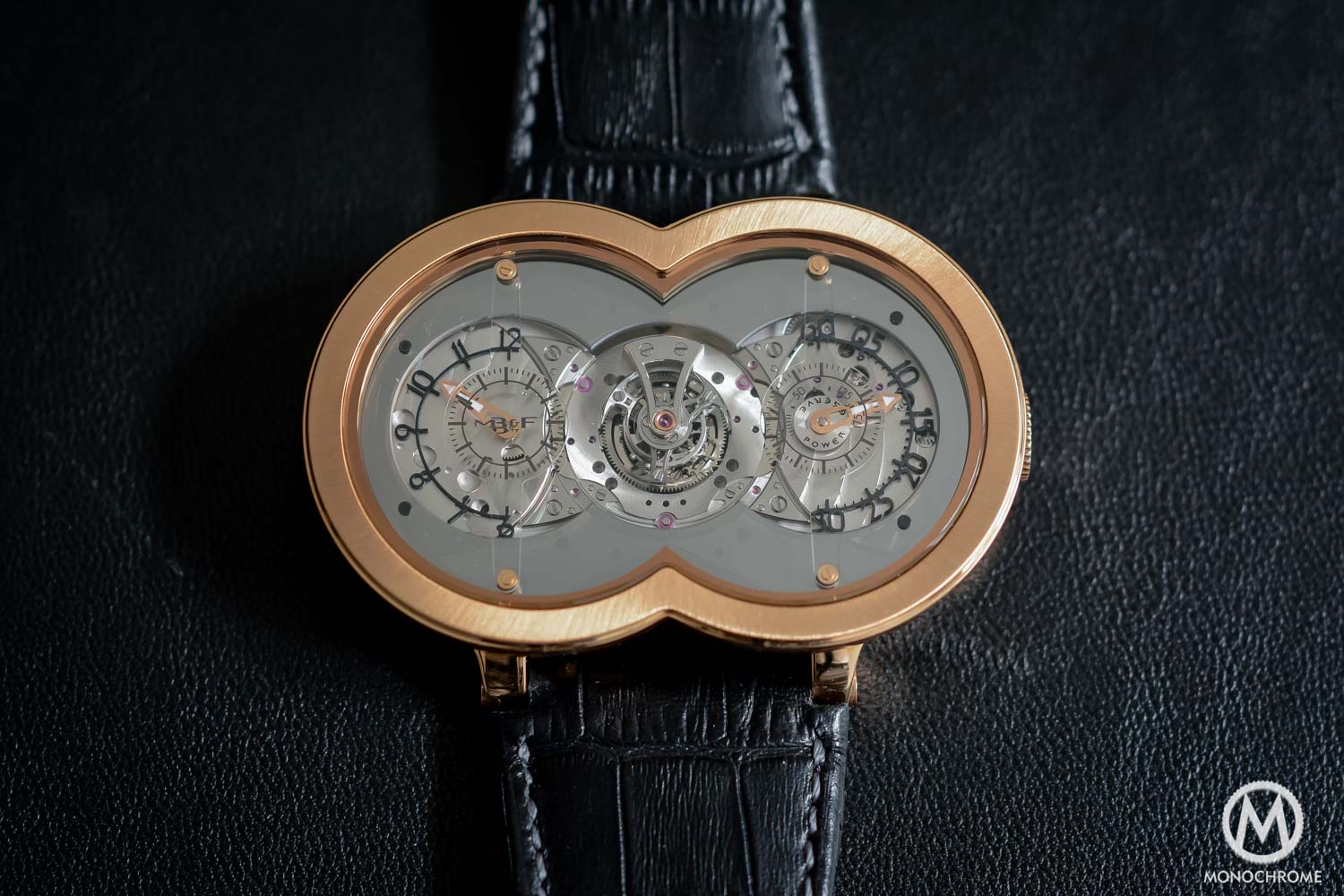
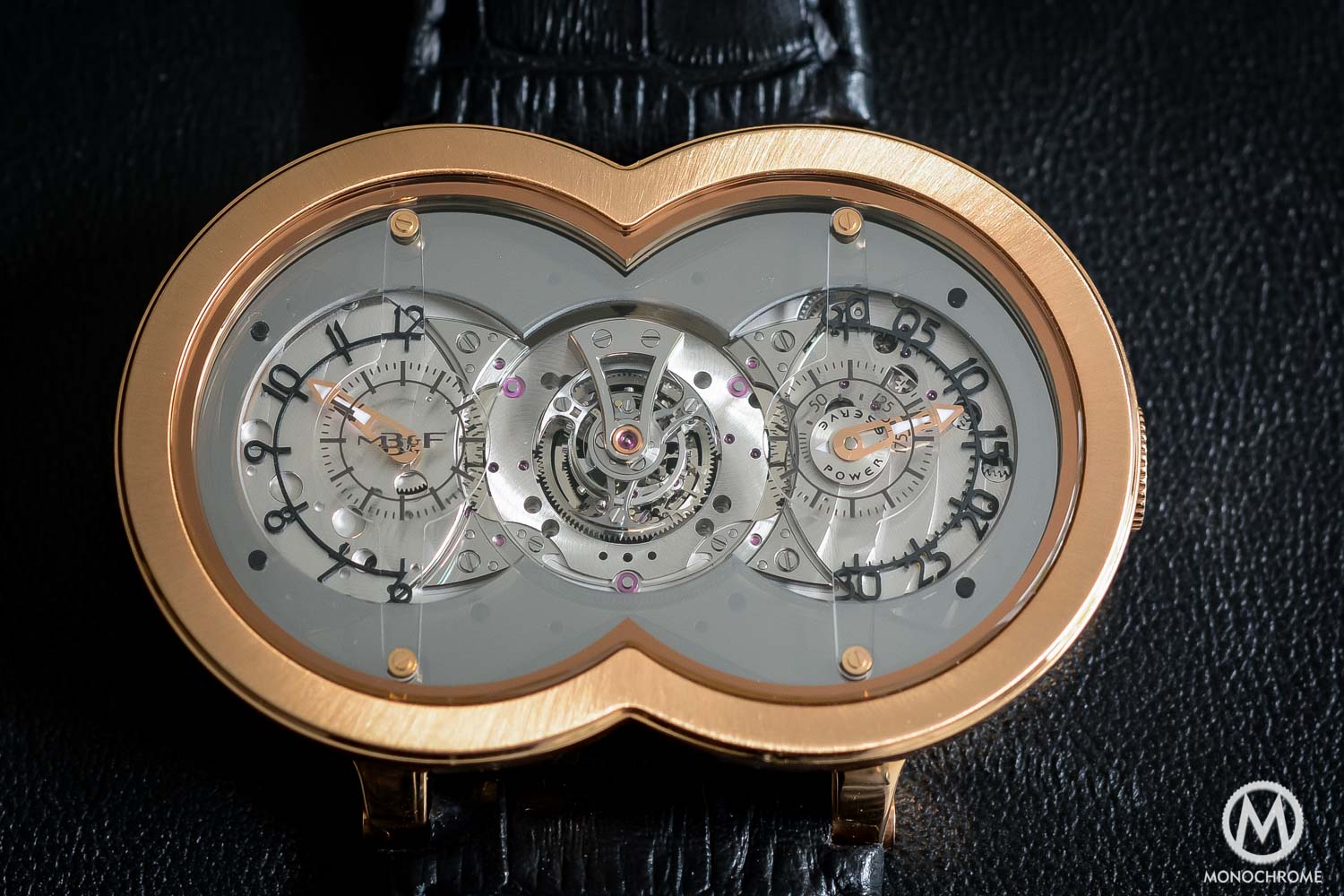
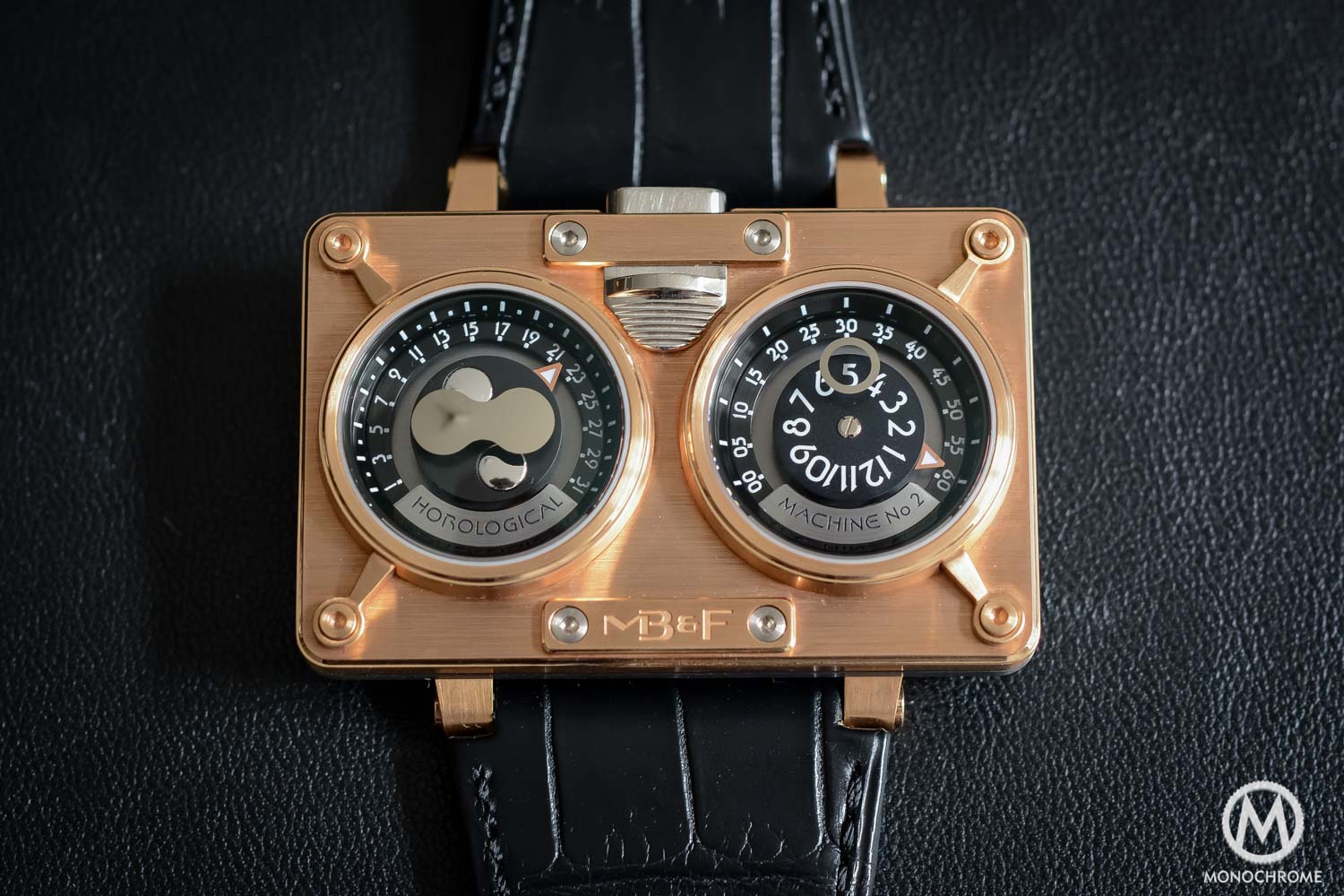
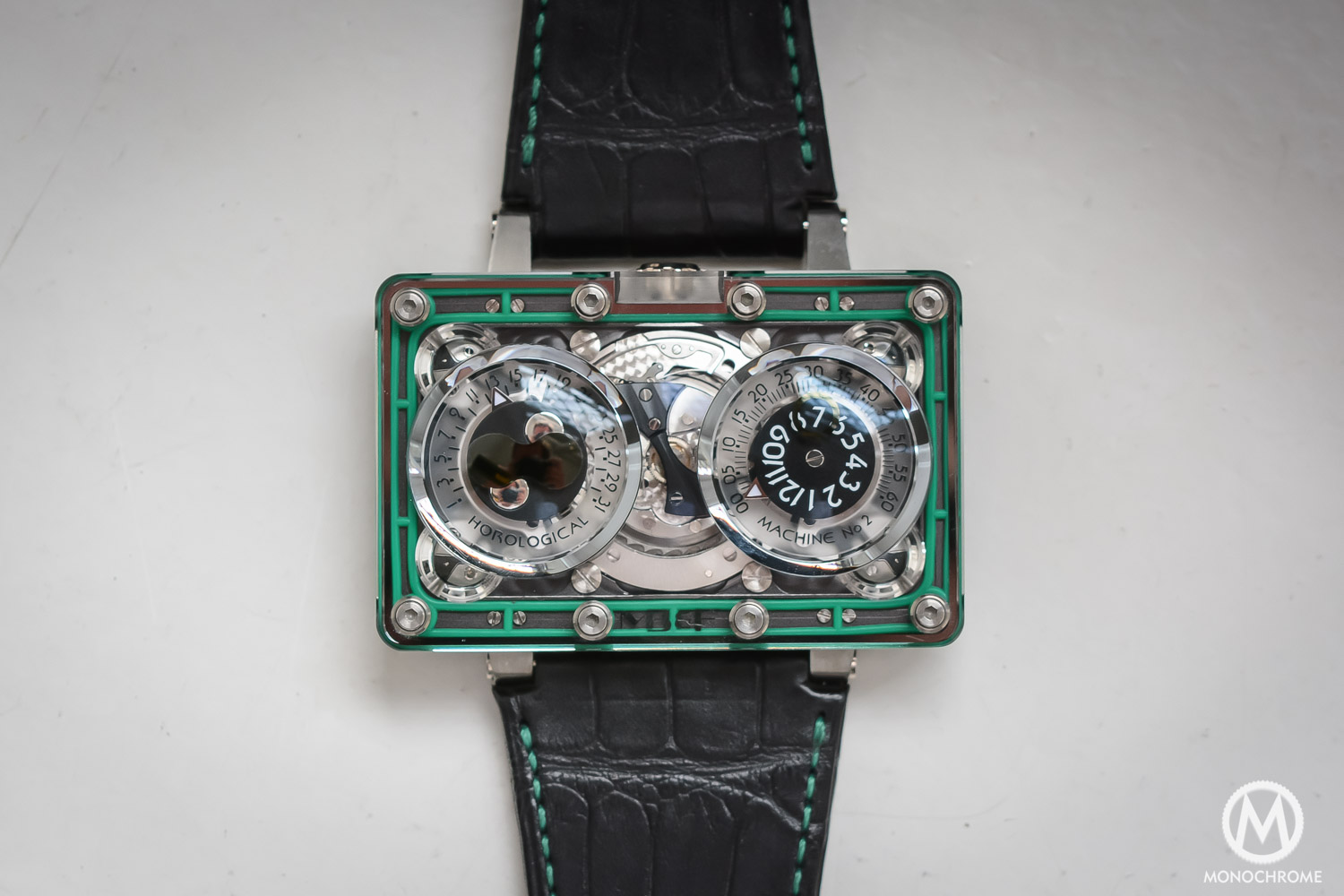
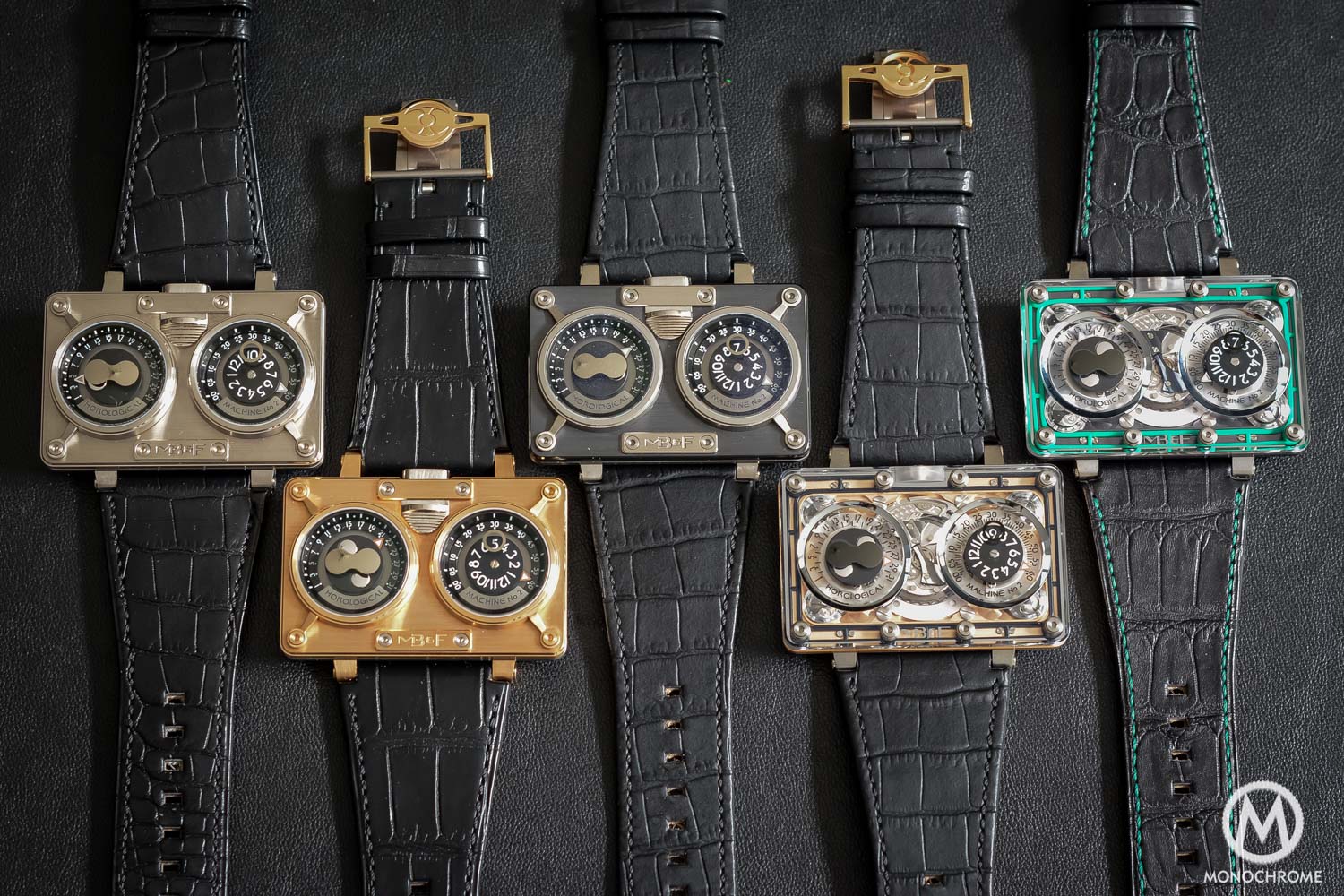
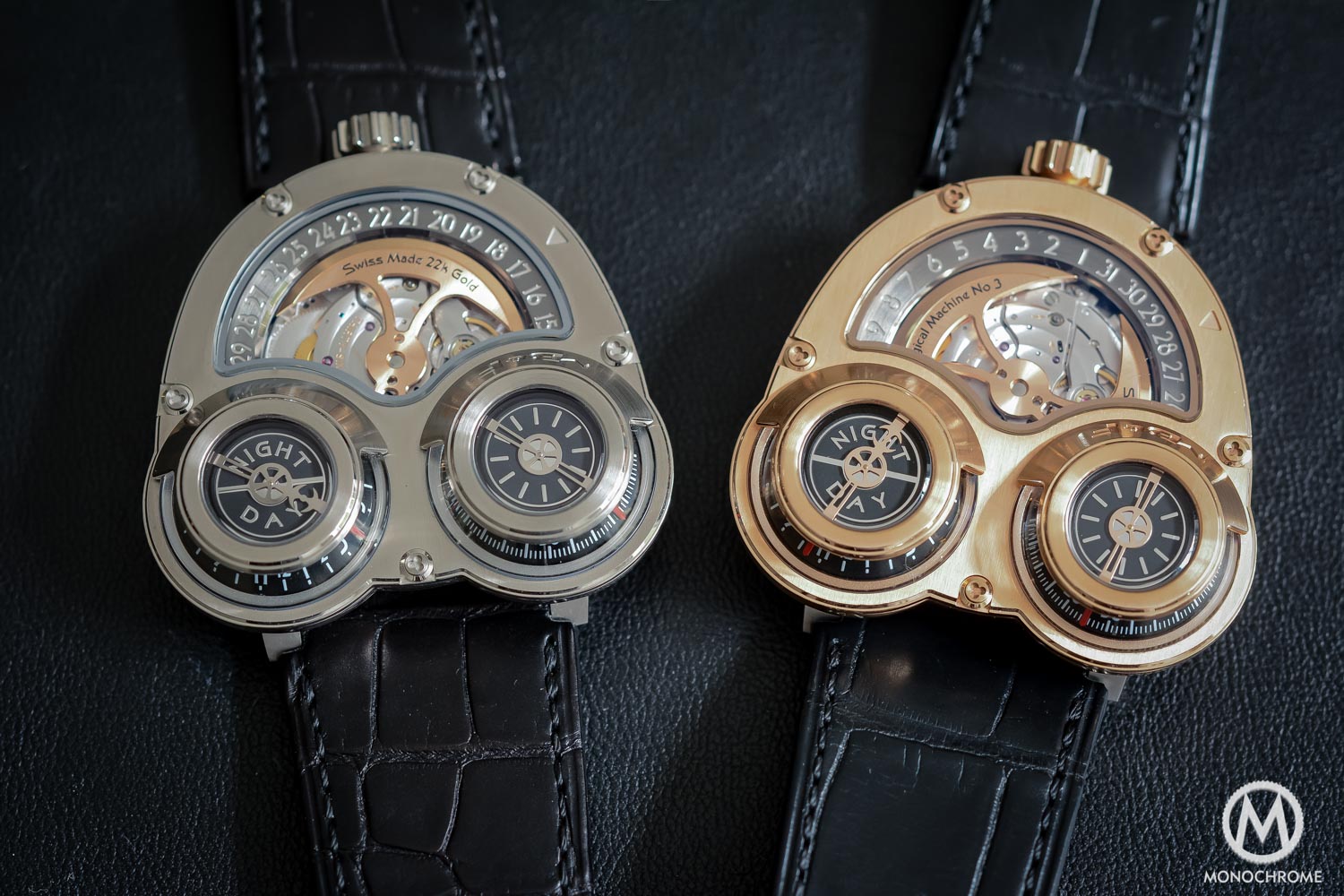
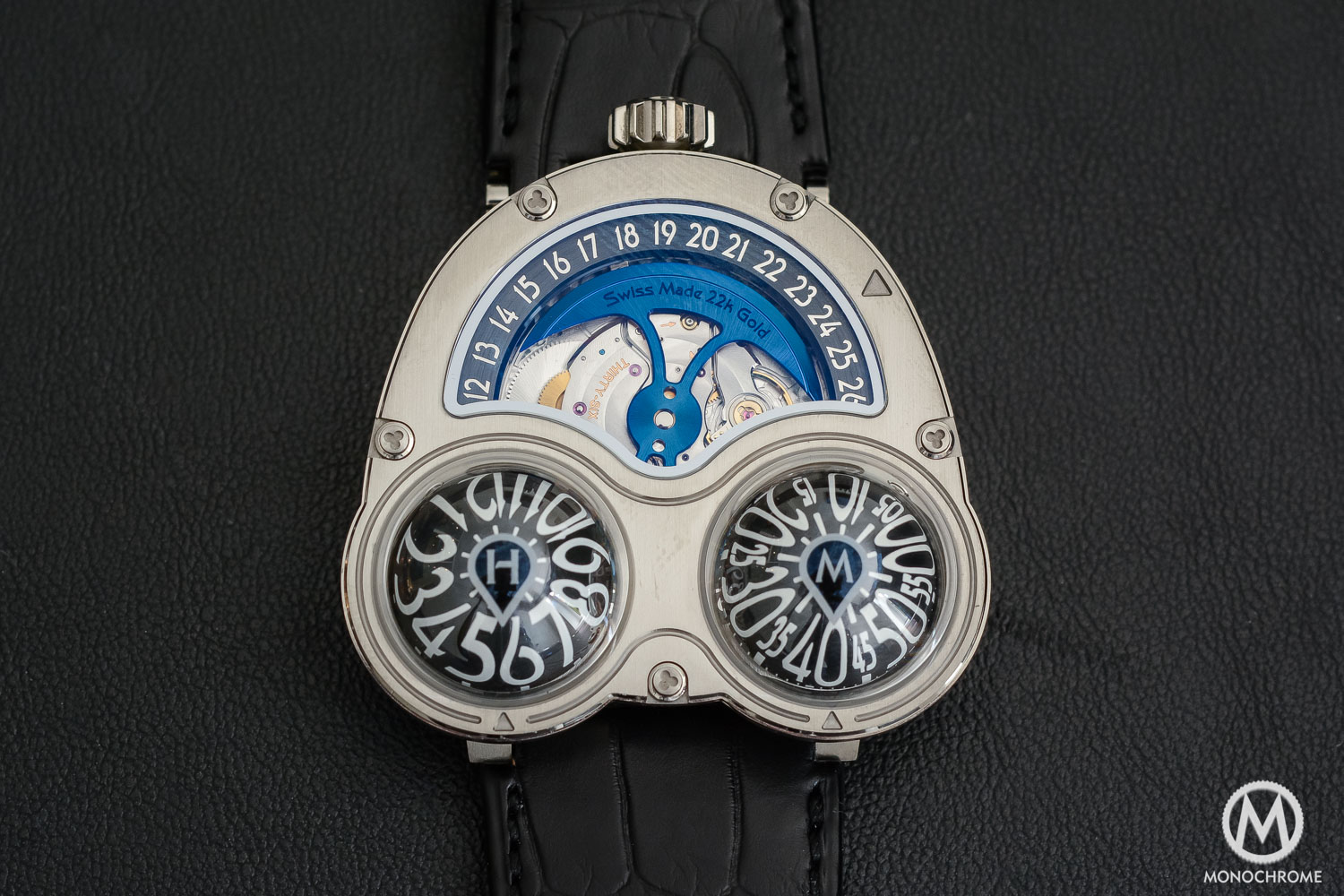
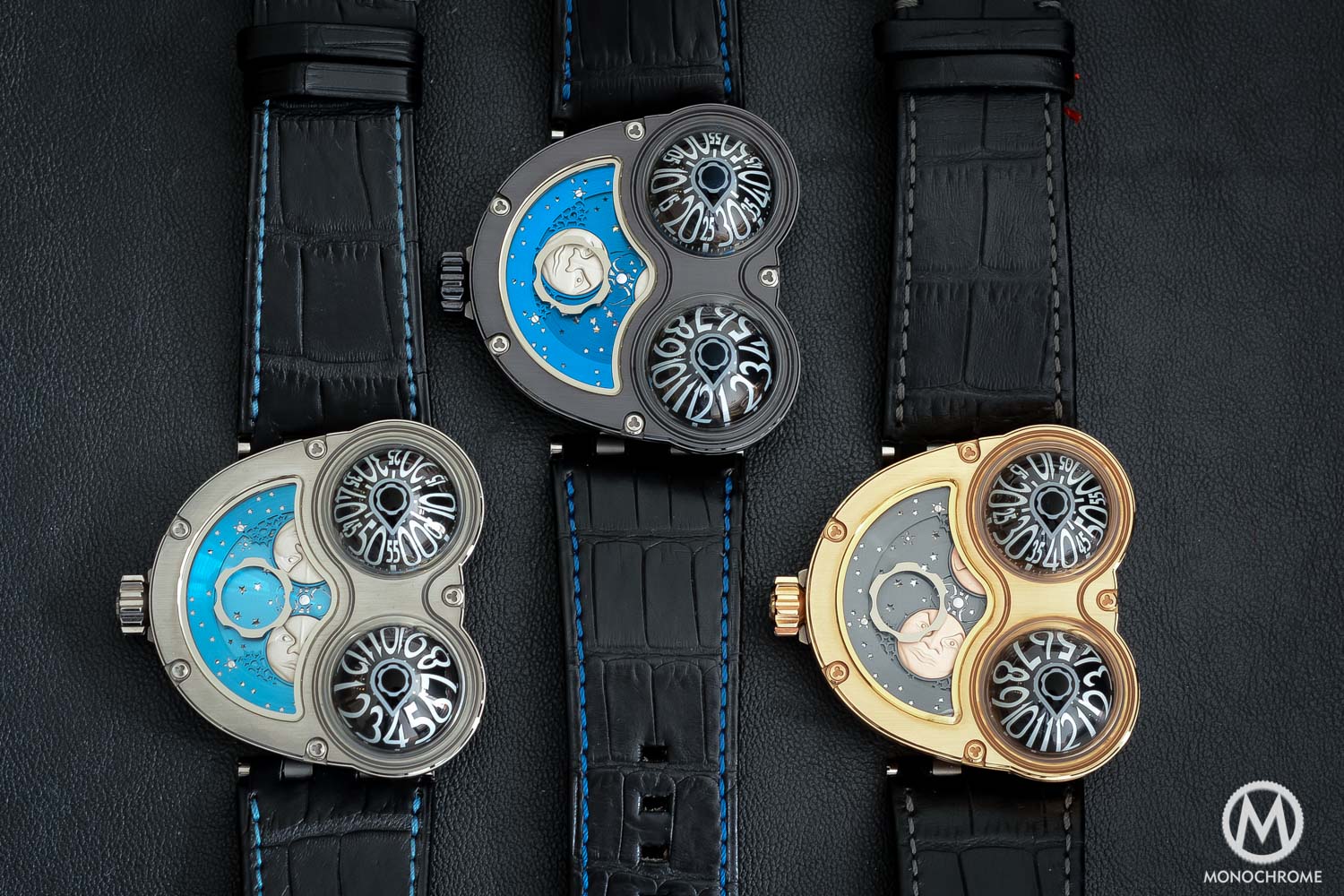
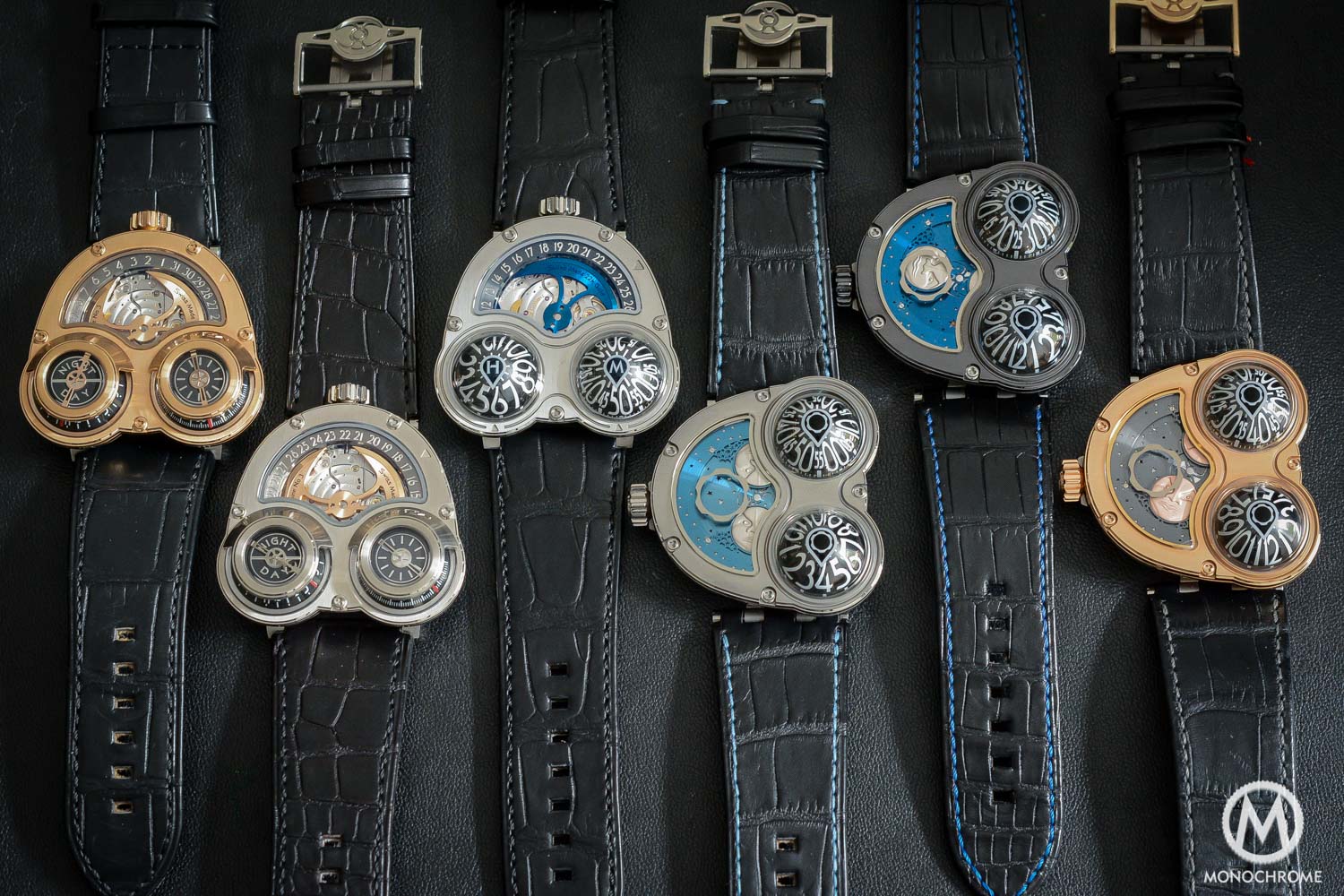
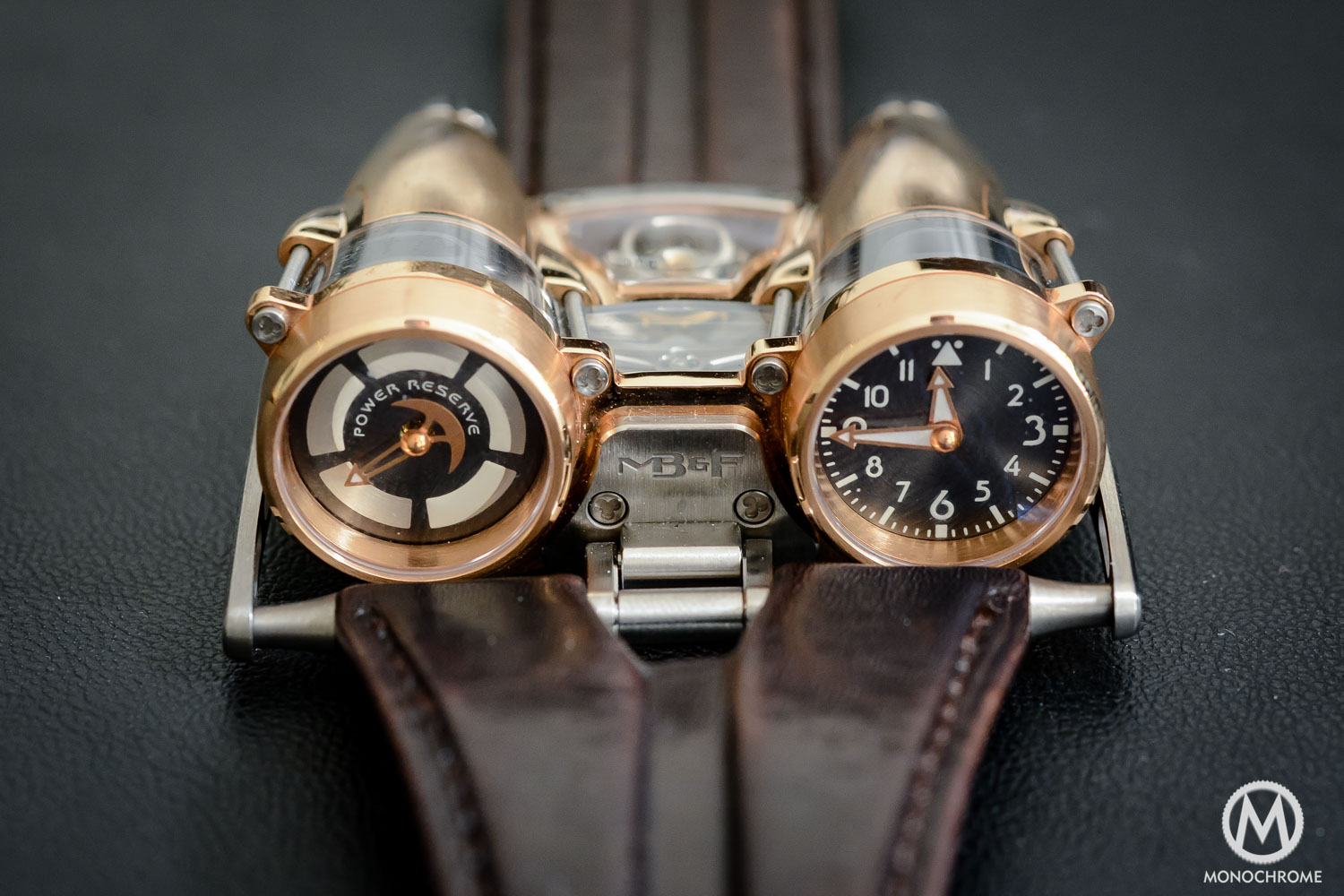
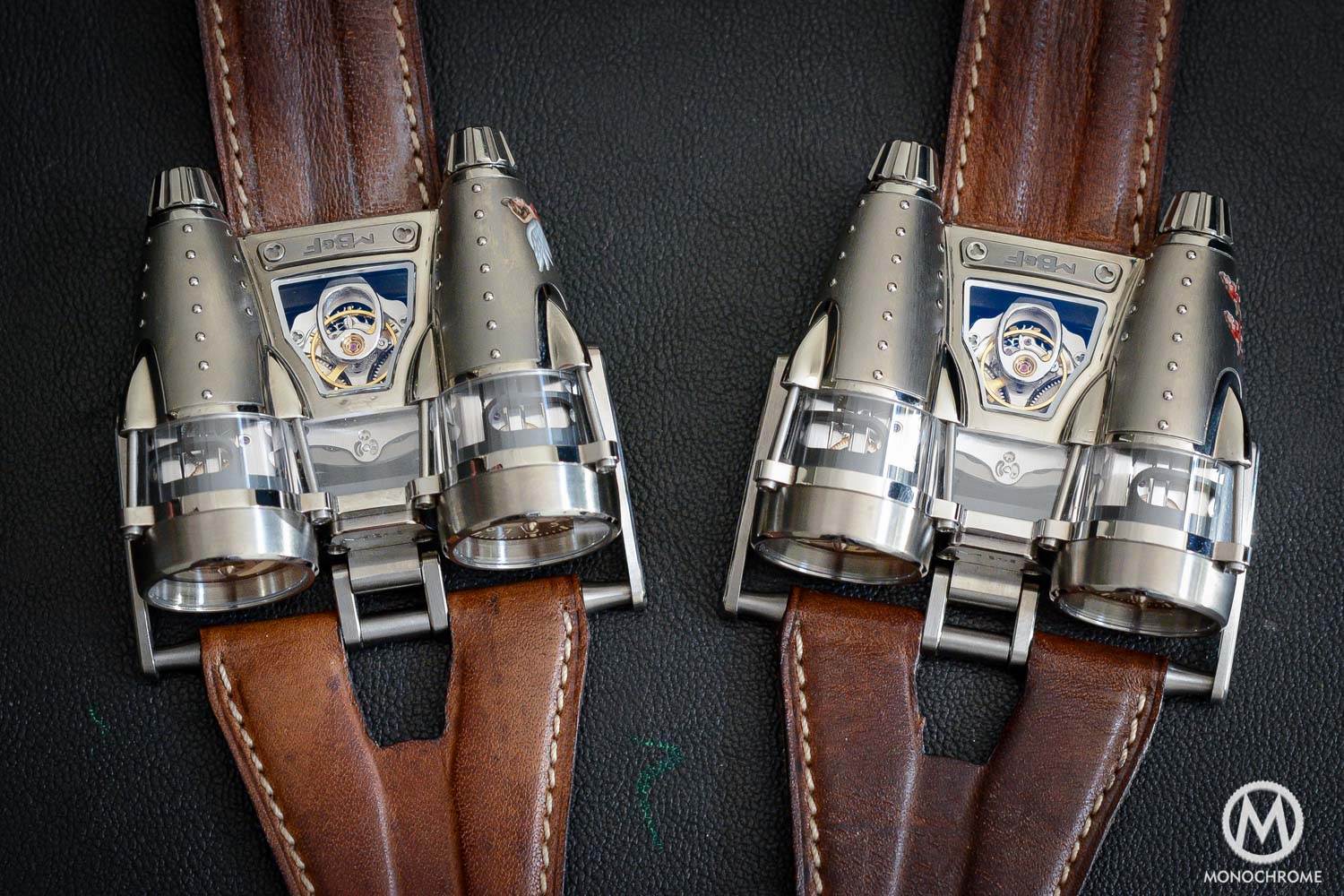
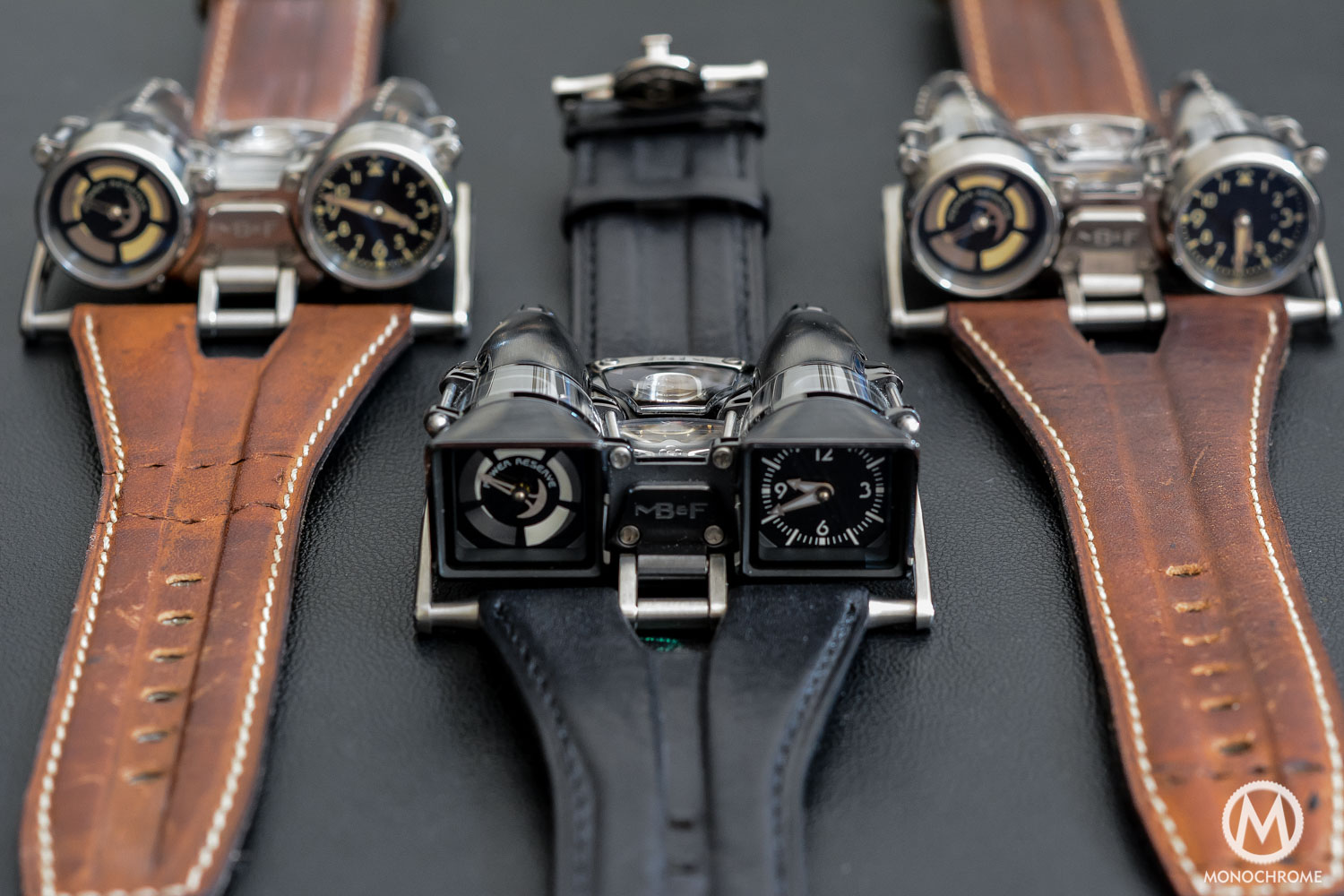
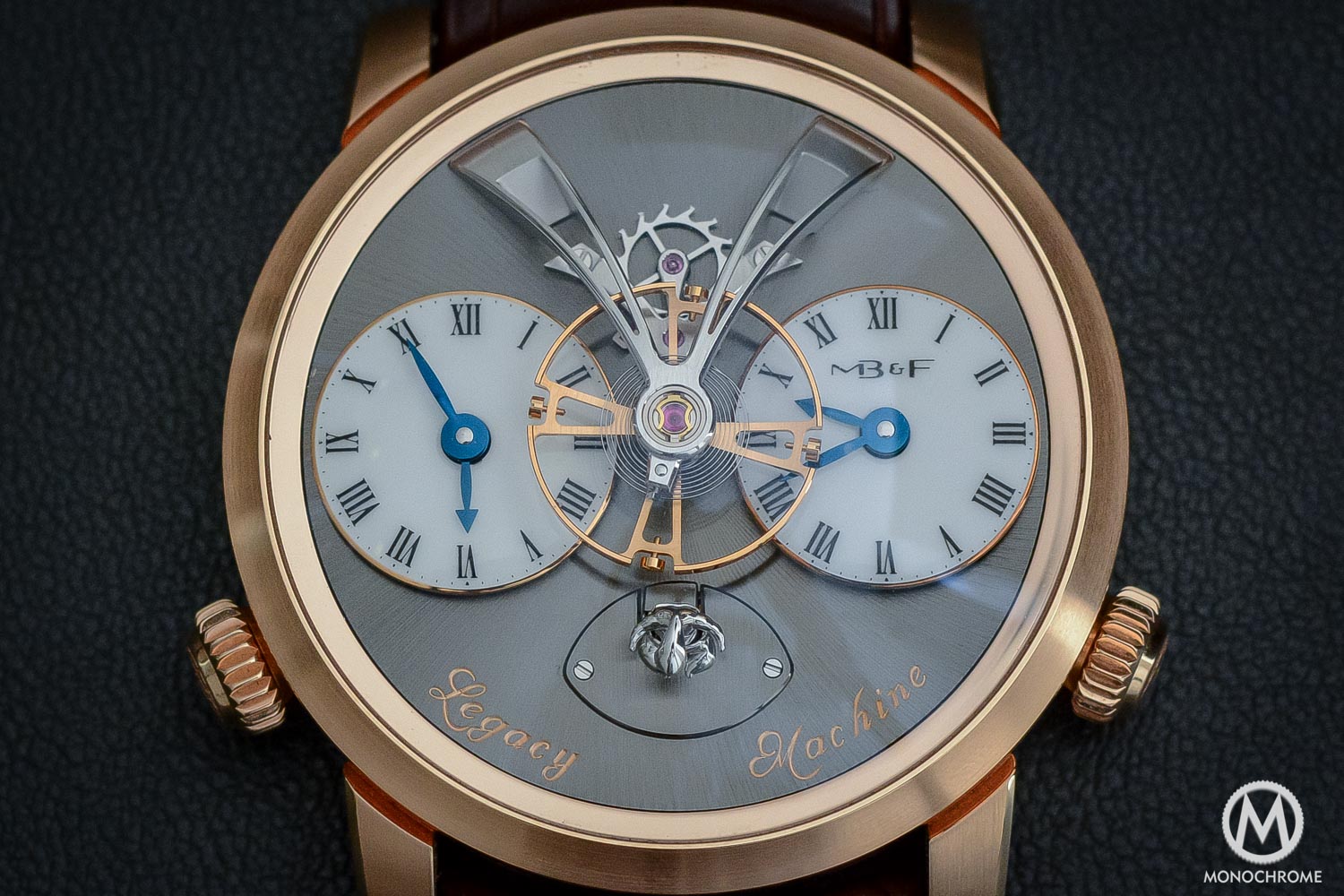

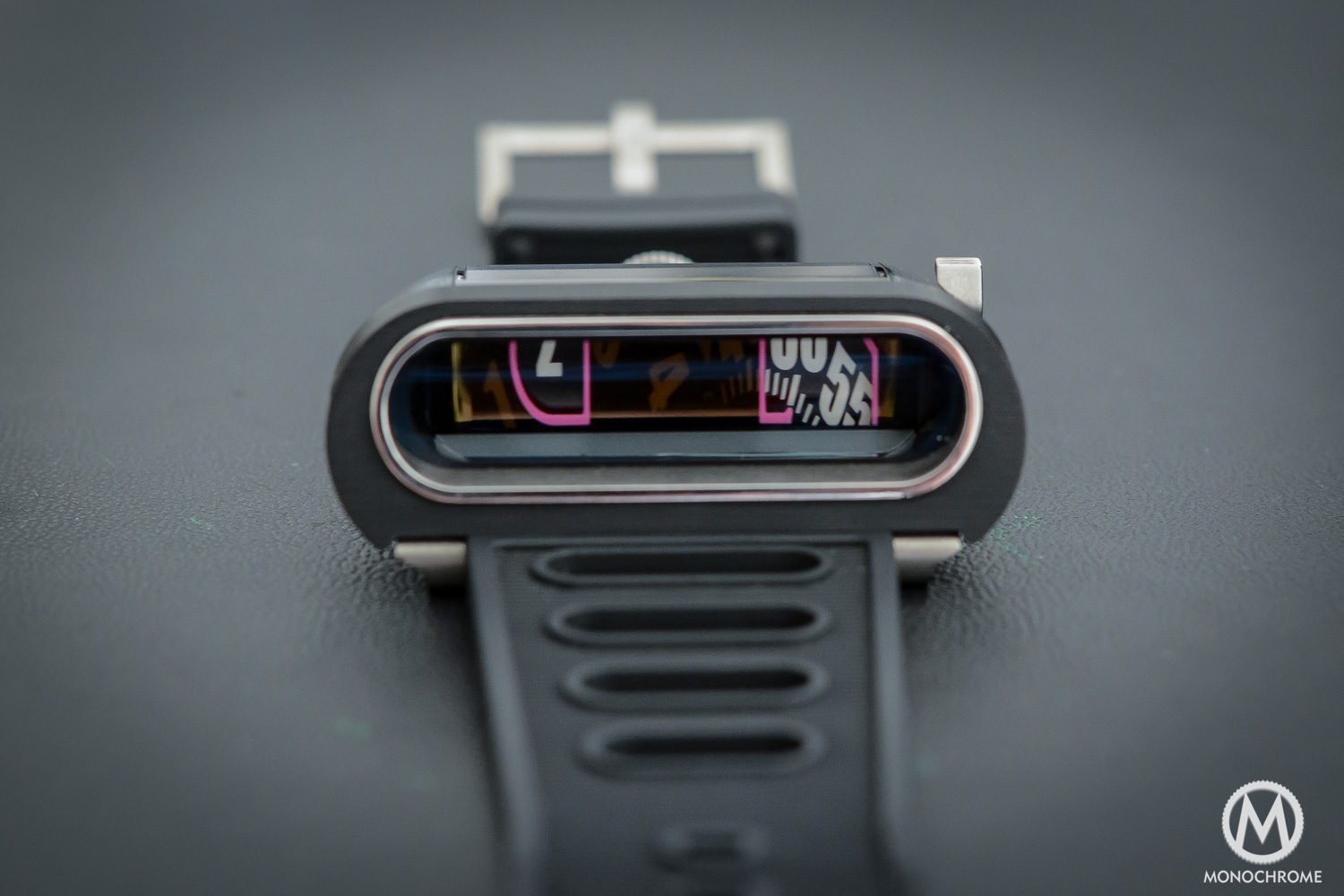


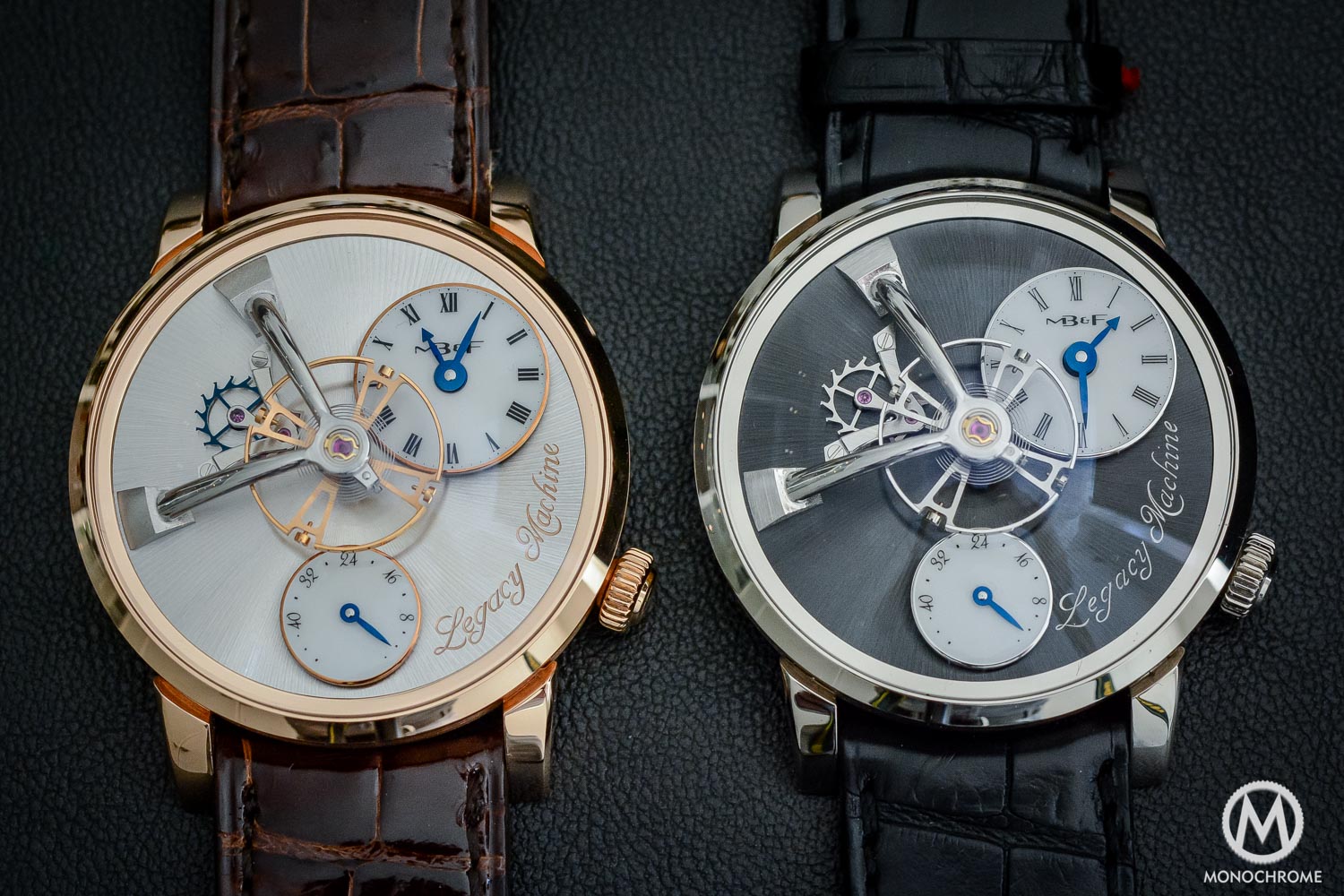
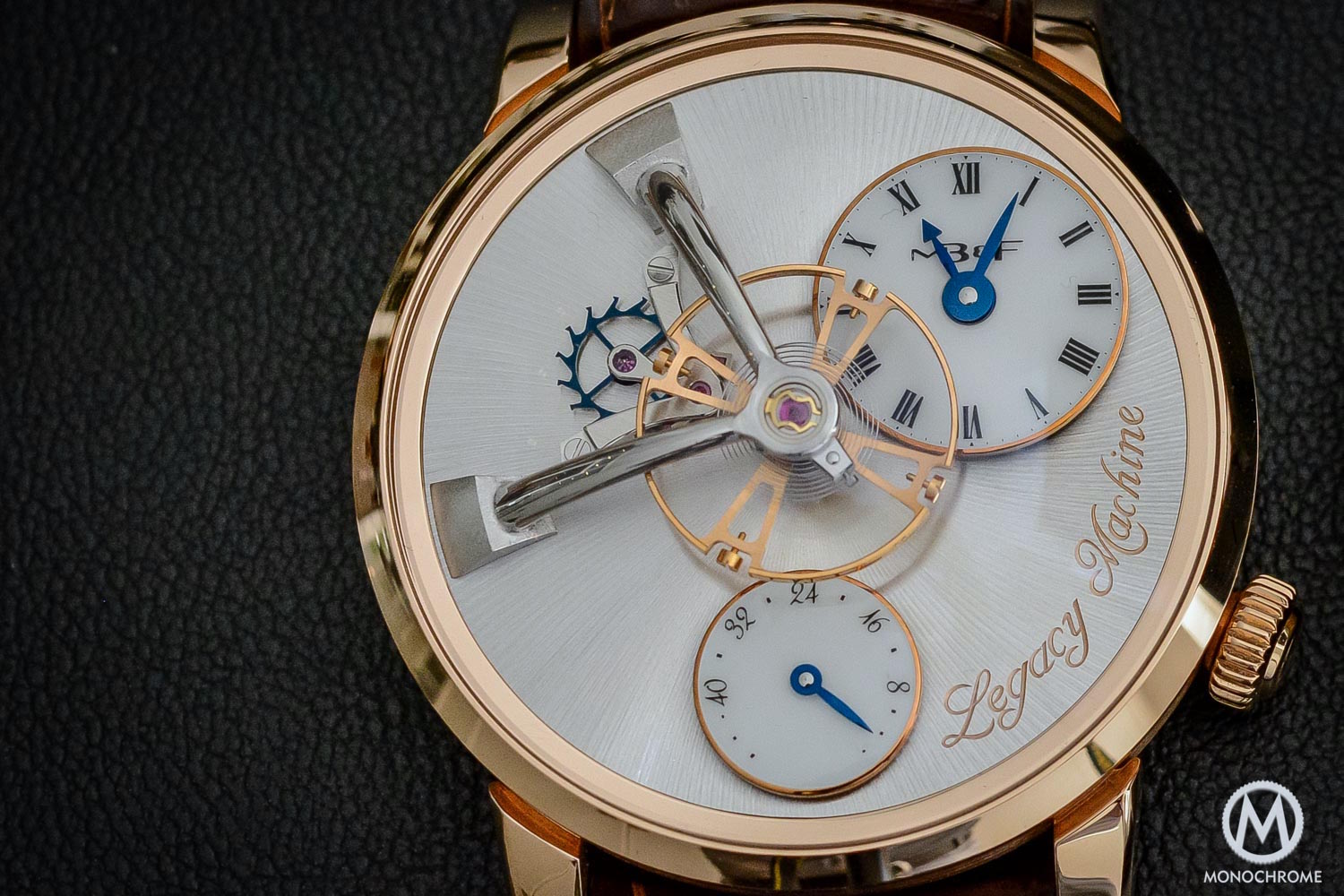

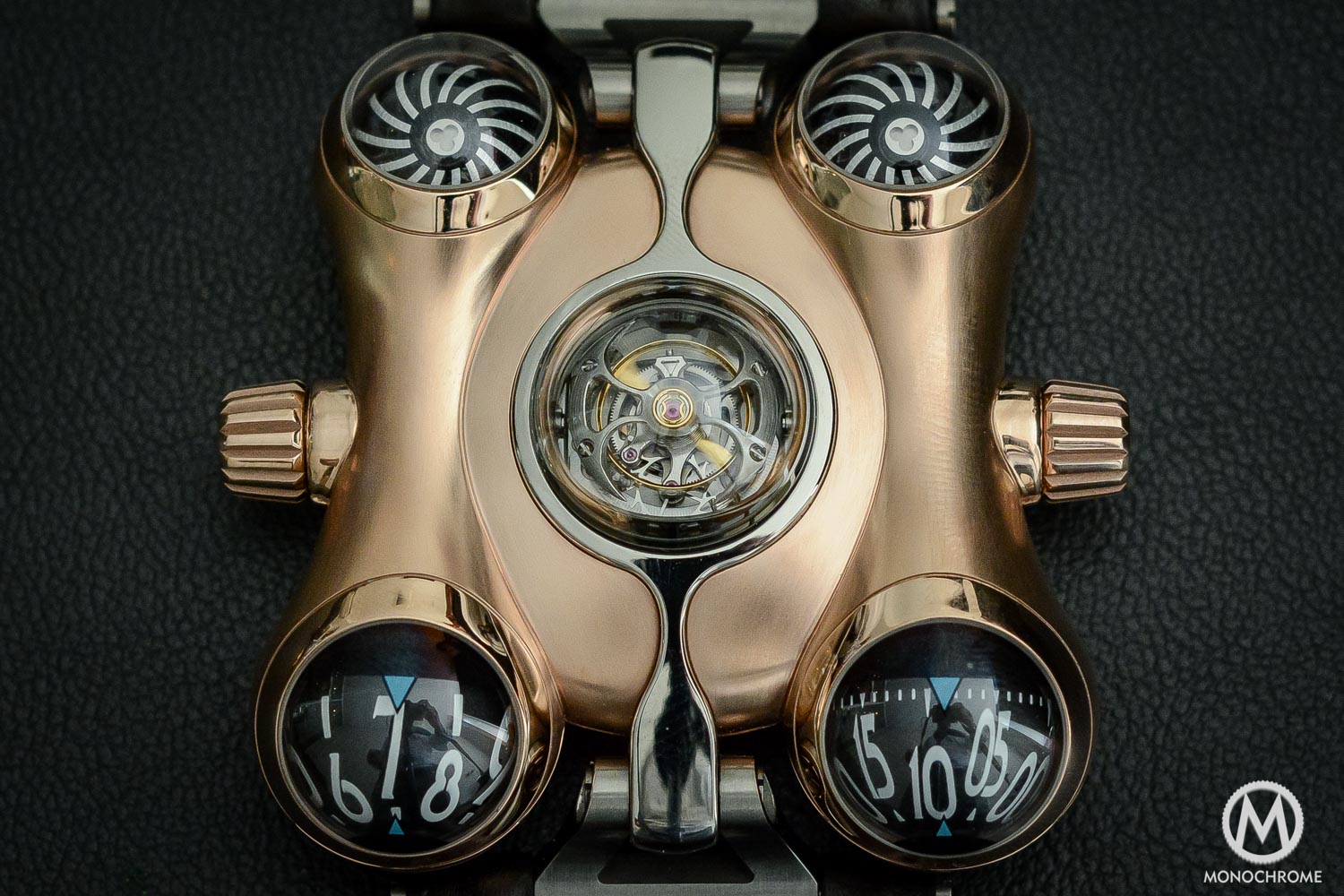
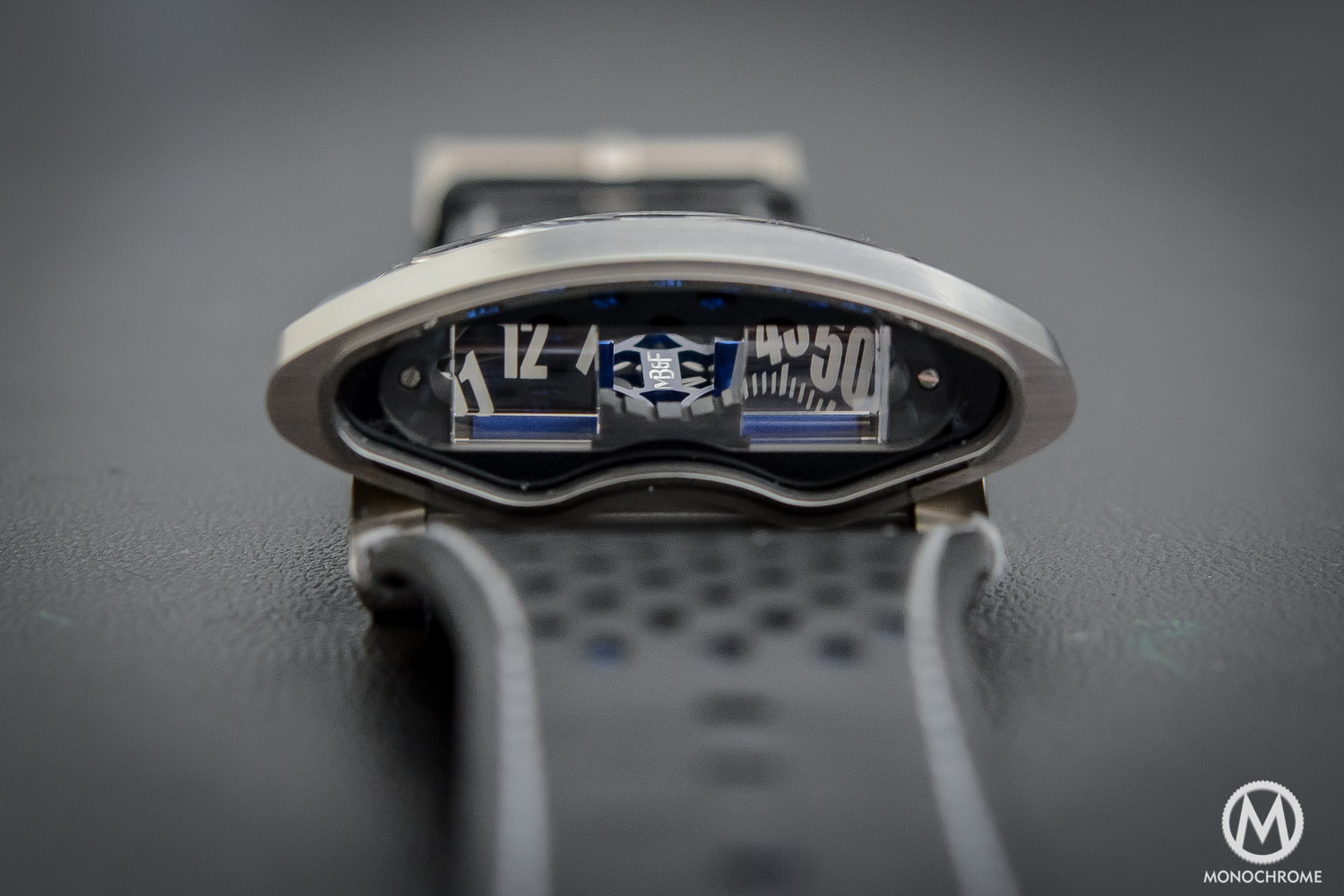
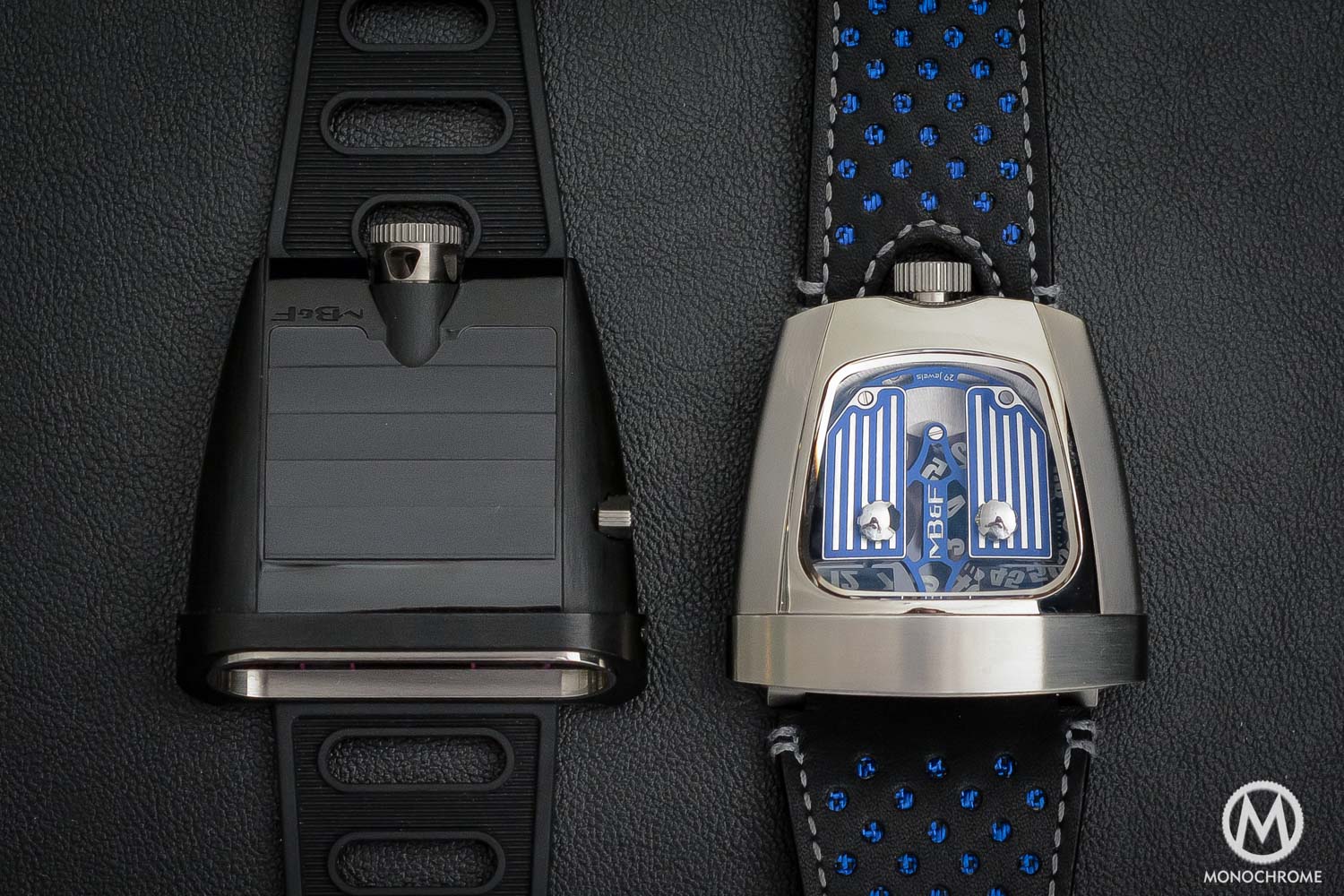
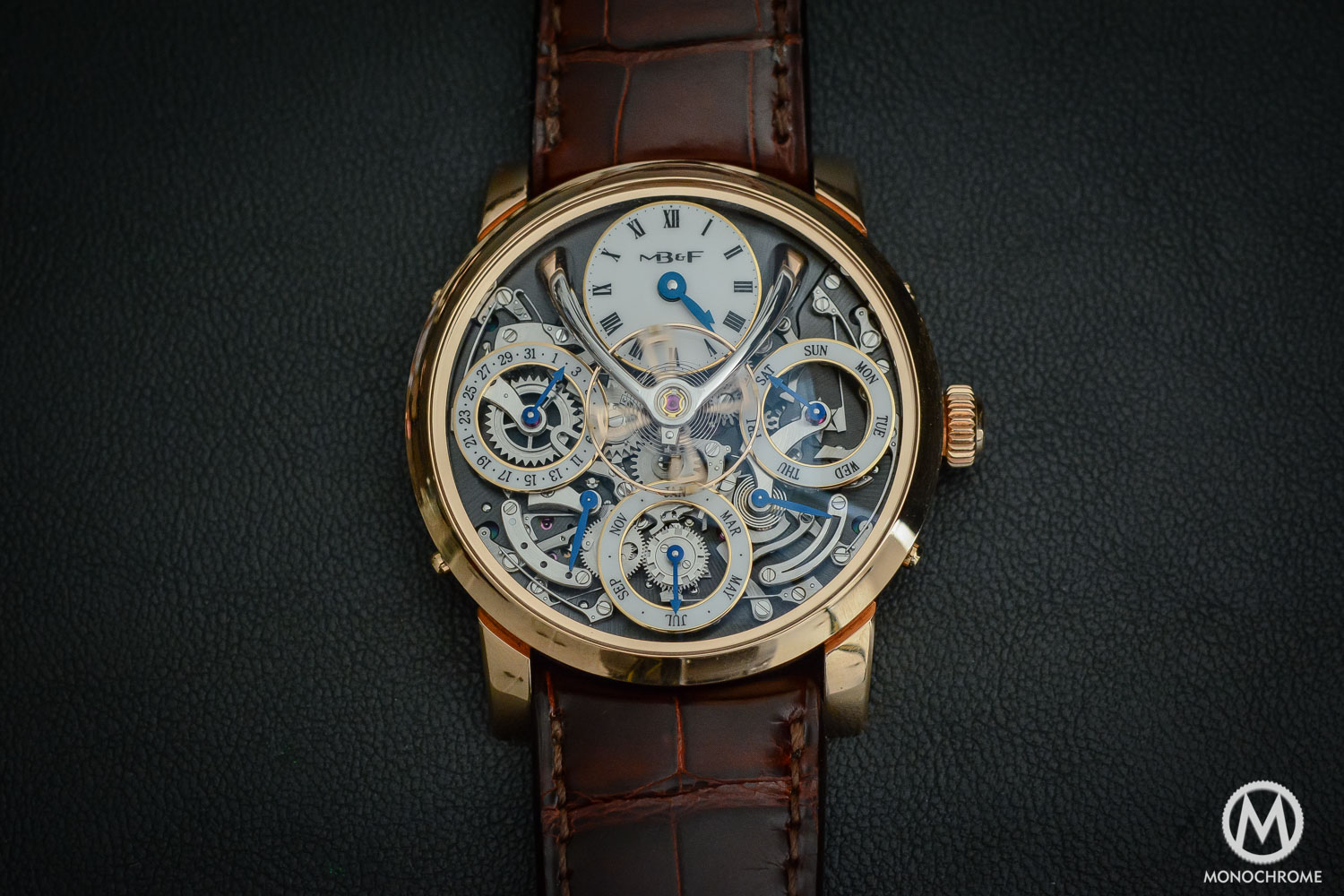





2 responses
Too cool, its amazing to see Max’s development over time as his style has grown. I personally prefer the LM series, but the creativity across the whole series is unique and an exciting part of today’s watch world
I think you missed out the hm6 Sapphire and the hm2 blackbox and lm1 alain silberstain…